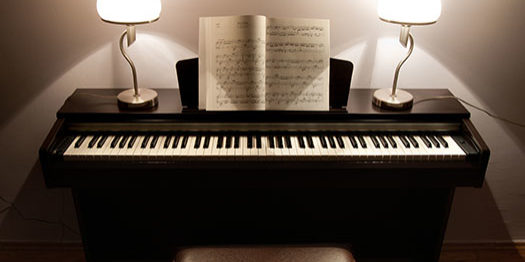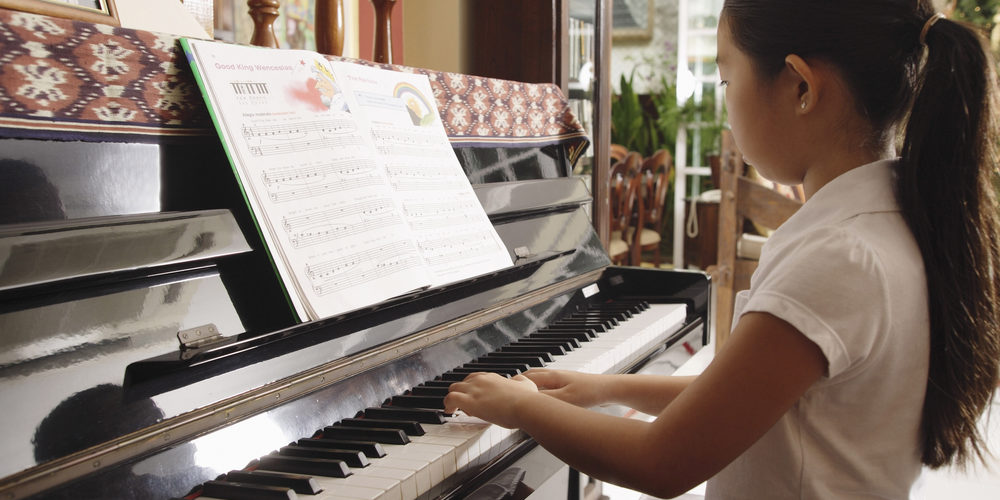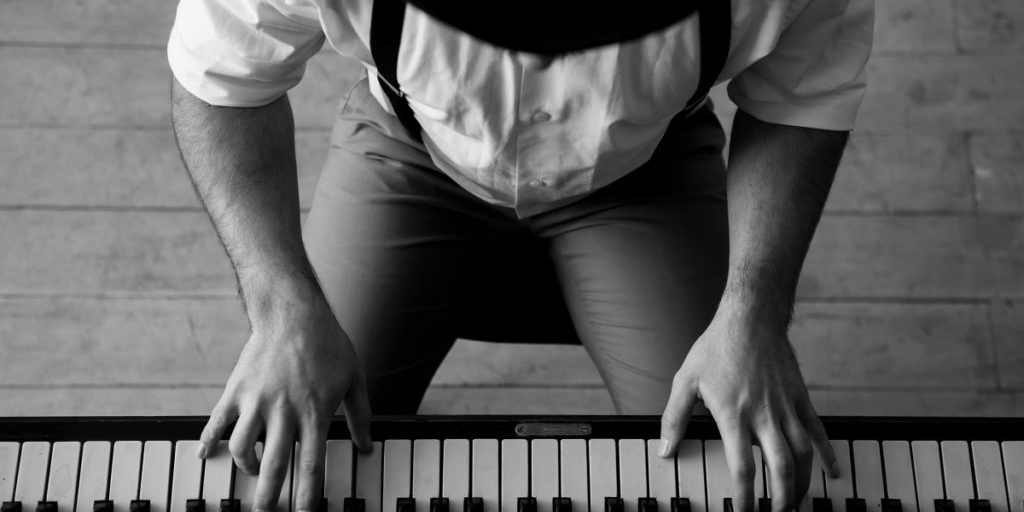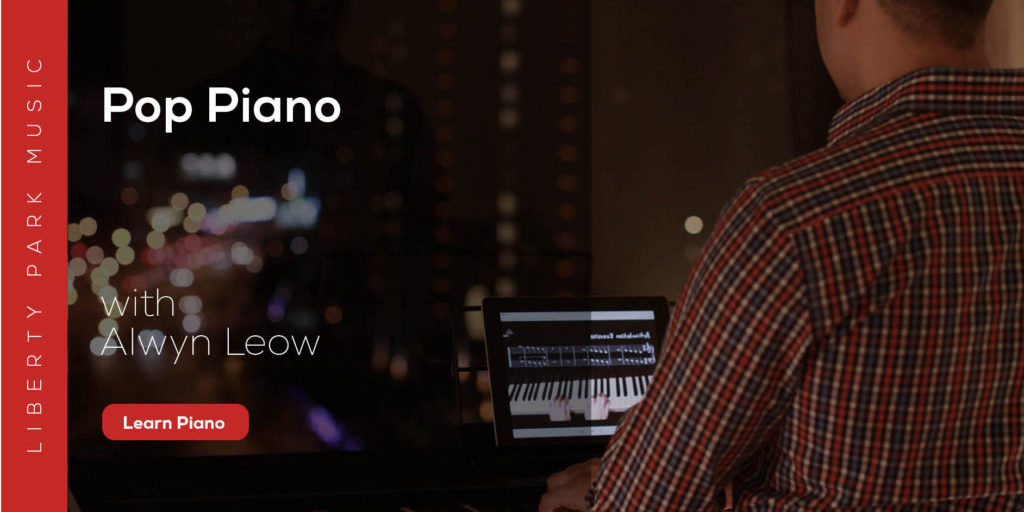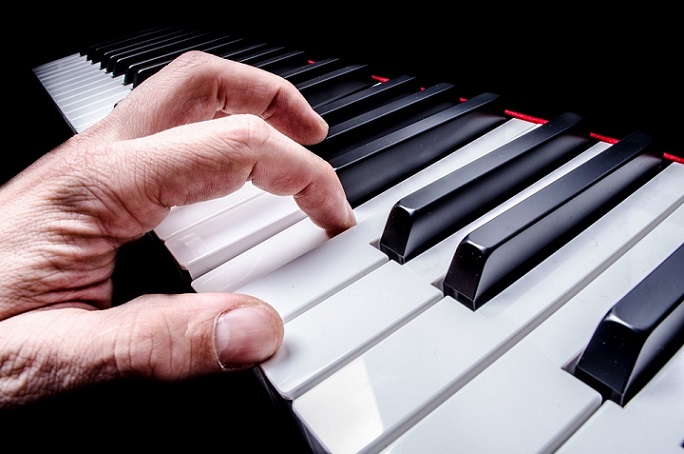
You might ask, why should I do finger exercises? Like athletes, musicians need good control of their muscles, and strong muscles can prevent injury. Playing the piano uses more than just the fingers; instead, the whole arms are required. To learn to use the arms, hands, fingers, and wrists correctly, finger exercises are more effective than actual pieces, since exercises are often designed to target one technique and their simple structure is less distracting. Moreover, finger exercises, similar to strength training for athletes, can improve finger strength, flexibility, dexterity, and coordination; these things can then improve speed, musicality, and overall performance when you are playing musical works.
In short, finger exercises, like scales and arpeggios, are important building blocks of musicianship.
To help you with finger exercises, this article explains the importance of finger exercises, provides you with several warm-up and finger/hand independence exercises (with or without the piano), and leaves you with three useful excerpts.
So when should you practice these exercises?
- You can incorporate some finger exercises into your warm-up routine.
- Afterwards, you can move on to other kinds of finger exercises.
Below, we’ll take a look at some exercises for warm-up, speed, finger independence, and excerpts targeted at finger independence and many people’s weakest link, left hand.
Warm Up Exercises
First of all, let’s do some warm up exercises without the piano. These exercises help you relax the parts that you will be using to play the piano (fingers, hands, wrists, arms, and shoulders) and settle your mind into the practice mode. Watch the video and follow along.
Velocity Exercise
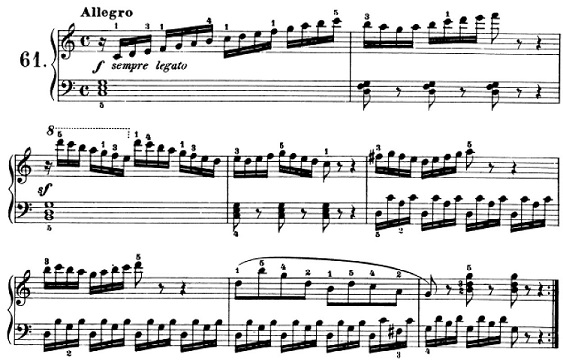
This exercise touches on how to play fast passages successfully, which is essentially exaggerating the circular and rotational motions needed to play the passage at a slow tempo, and minimize the motions to speed up.
To be able to play fast, we need to be familiar with the correct hand motions. Pianists are constantly drawing circles. Your right hand is in circular motions as you play up and down the scale. As the notes go up, the wrist scoops down; as the notes go down, the wrist is in an over motion. Your left hand moves a rotational motion; Rock the wrist and hand back and forth. When you go faster, minimize the rocking motion and propel forward quickly.
Play this excerpt slowly to familiarize yourself with the motions and then gradually speed up. See Michelle’s demonstrations of these motions in this video.
Finger/hand Independence Exercises
To help you strengthen finger independence, Michelle shows you three exercises in the following video.
- The first exercise is done on the fallboard.
- This exercise helps with keeping the proper hand shape necessary to play the piano and keeping the hand in one position without moving around too much.
- Basically, you raise one or two fingers at a time with the rest of the fingers on the board.
- In the second exercise, open the fallboard and do the same thing on the piano.
- With the sound as feedback, you can hear if each of your fingers is hitting the key with the same force.
- In the last exercise, you will play a simple C 5-finger pattern with two hands playing different articulations—legato or staccato.
- The exercise trains hand independence, which is also seen in actual pieces, where one hand plays legato melodies and the other plays staccato accompaniment.
- Again, do it slowly and familiarize yourself with the hand motions.
- Remember to switch hands so both hand get to play staccato and legato.
After these three exercises, let’s turn to two excerpts that also focus on finger and hand independence.
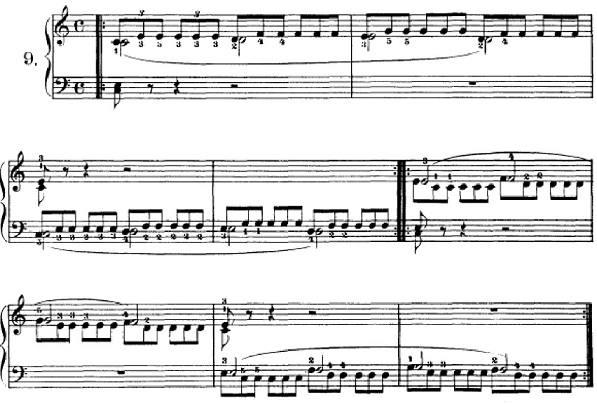
Learn with LPM
To learn the fundamentals of learning the piano, such as finger techniques, reading piano scores, basic theory, chords and harmony, check out Michelle's course on Learn Classical Piano - Beginners
Remember the exercise we did on the fallboard?
Here you can apply the same ideas in a piece. Many pieces, such as works by Johannes Brahms, require one hand playing two voices, with one voice held down while the other voice continues.
The key here is to keep your hand relax when it’s holding the half notes while playing the top repeated notes. Again, go slowly at first and make sure your hand does not tense up. This motion is used throughout the exercise.
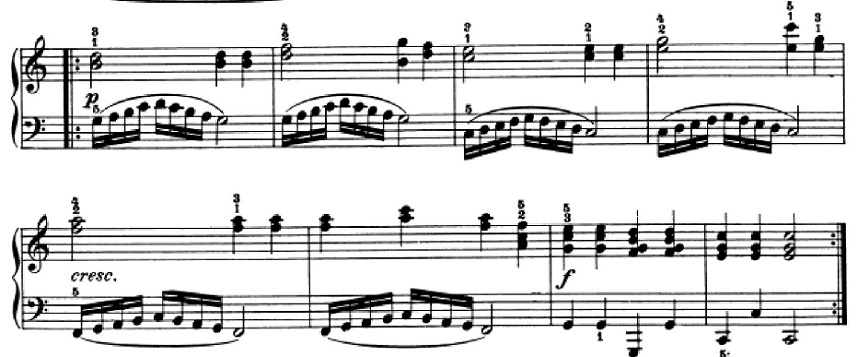
For many, the left hand is often the weak hand. You will see something like this in a piece, where the left hand plays fast passages full of 16th notes. This exercise can strengthen the left hand. Practice the left hand by itself first. You will notice three 5-finger patterns: G, C, and D. As you play, listen closely to ensure each finger is going into the keys with equal amount of weight from the arm. Again, start slow, then gradually speed up. When you are confident with the left hand, add the right hand.
In conclusion
In this article we talk about the importance of finger exercises, when to do them, a warm-up routine, three finger/hand independence exercises, and three excerpts targeted to train speed, accuracy, and the left hand. When you play all the excerpts, try to remember the motions in each hand. Most importantly, start slow for every exercise, so you don’t accumulate bad habits. As you become familiar with the motions and are able to remain relaxed, you can then speed up.
About the Author: Sidney Prim
Shih-Ni (Sidney) Prim enjoys researching, playing, and listening to music. She is currently a PhD candidate in Historical Musicology at the University of Iowa. Growing up in Taiwan, she received her Bachelor of Arts in Foreign Languages and Literatures from National Chiao Tung University in Hsinchu, Taiwan. She then went to the United States and has been trained in several fields at the graduate level; she has received her Master of Music in Musicology from the Florida State University, Master of Music in Saxophone Performance from the University of North Carolina at Greensboro, and Master of Arts in Comparative Literature from the University of North Carolina at Chapel Hill.


